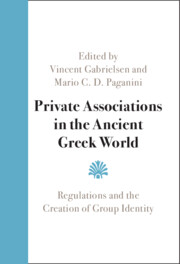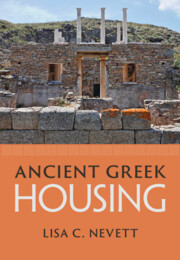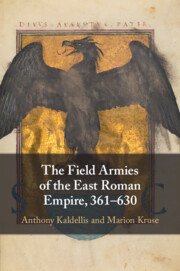Refine search
Actions for selected content:
23990 results in Ancient history
1 - Genocide before the State?
- from Part I - Themes of Genocide through History
-
-
- Book:
- The Cambridge World History of Genocide
- Published online:
- 23 June 2023
- Print publication:
- 04 May 2023, pp 59-85
-
- Chapter
- Export citation
15 - William the Conqueror’s Harrying of the North, 1069–1070
- from Part III - The Medieval World and Early Imperial Expansions
-
-
- Book:
- The Cambridge World History of Genocide
- Published online:
- 23 June 2023
- Print publication:
- 04 May 2023, pp 403-424
-
- Chapter
- Export citation
6 - Genocide in Ancient Israelite and Early Jewish Sources
- from Part II - The Ancient World
-
-
- Book:
- The Cambridge World History of Genocide
- Published online:
- 23 June 2023
- Print publication:
- 04 May 2023, pp 185-208
-
- Chapter
- Export citation
5 - Climate, Violence and Ethnic Conflict in the Ancient World
- from Part I - Themes of Genocide through History
-
-
- Book:
- The Cambridge World History of Genocide
- Published online:
- 23 June 2023
- Print publication:
- 04 May 2023, pp 150-182
-
- Chapter
- Export citation
24 - Genocidal Massacres in the Spanish Conquest of the Americas
- from Part III - The Medieval World and Early Imperial Expansions
-
-
- Book:
- The Cambridge World History of Genocide
- Published online:
- 23 June 2023
- Print publication:
- 04 May 2023, pp 622-647
-
- Chapter
- Export citation
4 - Genocide, Starvation and Famine
- from Part I - Themes of Genocide through History
-
-
- Book:
- The Cambridge World History of Genocide
- Published online:
- 23 June 2023
- Print publication:
- 04 May 2023, pp 127-149
-
- Chapter
- Export citation
Maps
-
- Book:
- The Cambridge World History of Genocide
- Published online:
- 23 June 2023
- Print publication:
- 04 May 2023, pp xii-xii
-
- Chapter
- Export citation
Introduction to Volume I
-
-
- Book:
- The Cambridge World History of Genocide
- Published online:
- 23 June 2023
- Print publication:
- 04 May 2023, pp 31-56
-
- Chapter
- Export citation
14 - Genocide, Extermination and Mass Killing in Chinese History
- from Part II - The Ancient World
-
-
- Book:
- The Cambridge World History of Genocide
- Published online:
- 23 June 2023
- Print publication:
- 04 May 2023, pp 376-400
-
- Chapter
- Export citation
Part II - The Ancient World
-
- Book:
- The Cambridge World History of Genocide
- Published online:
- 23 June 2023
- Print publication:
- 04 May 2023, pp 183-400
-
- Chapter
- Export citation
General Editor’s Acknowledgements
-
- Book:
- The Cambridge World History of Genocide
- Published online:
- 23 June 2023
- Print publication:
- 04 May 2023, pp xx-xxii
-
- Chapter
- Export citation
Part I - Themes of Genocide through History
-
- Book:
- The Cambridge World History of Genocide
- Published online:
- 23 June 2023
- Print publication:
- 04 May 2023, pp 57-182
-
- Chapter
- Export citation
11 - Caesar’s Gallic Genocide
- from Part II - The Ancient World
-
-
- Book:
- The Cambridge World History of Genocide
- Published online:
- 23 June 2023
- Print publication:
- 04 May 2023, pp 309-329
-
- Chapter
- Export citation
8 - Urbicide in the Ancient Greek World, 480–330 bce
- from Part II - The Ancient World
-
-
- Book:
- The Cambridge World History of Genocide
- Published online:
- 23 June 2023
- Print publication:
- 04 May 2023, pp 235-256
-
- Chapter
- Export citation
Figures
-
- Book:
- The Cambridge World History of Genocide
- Published online:
- 23 June 2023
- Print publication:
- 04 May 2023, pp x-xi
-
- Chapter
- Export citation
16 - Genocidal Massacres of Jews in Medieval Western Europe, 1096–1392
- from Part III - The Medieval World and Early Imperial Expansions
-
-
- Book:
- The Cambridge World History of Genocide
- Published online:
- 23 June 2023
- Print publication:
- 04 May 2023, pp 425-447
-
- Chapter
- Export citation

Private Associations in the Ancient Greek World
- Regulations and the Creation of Group Identity
-
- Published online:
- 03 May 2023
- Print publication:
- 29 June 2023
-
- Book
-
- You have access
- Open access
- Export citation

Ancient Greek Housing
-
- Published online:
- 28 April 2023
- Print publication:
- 25 May 2023

Cultural Memory in Republican and Augustan Rome
-
- Published online:
- 27 April 2023
- Print publication:
- 11 May 2023

The Field Armies of the East Roman Empire, 361–630
-
- Published online:
- 27 April 2023
- Print publication:
- 11 May 2023
